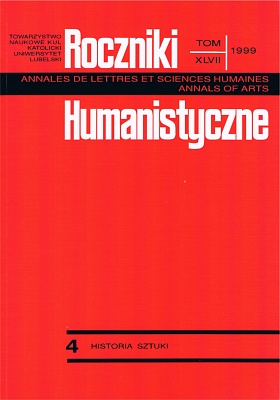Wybrane zagadnienia narracji obrazowej na przykładzie Apokalipsy z Angers
Abstrakt
The Apocalypse of Angers is the largest and best preserved example of the 14th-century tapisserie historiée. The iconography of the fabrics dates back to miniature painting and is closely linked with the group of illuminated group of Apocalypses made in England and north France in the second half of the thirteenth and fourteenth centuries. The English and French manuscripts reflect many of the then social, cultural and religious transformations, their extended painting scheme points at the same time new directions of the development of Gothic art. It is a characteristic of 13th- and 14th-century apocalyptic iconography, in comparison with the earlier periods, that it had a narrative character. The fact that the Revelations to St. John had a more epic formulation corresponds with the new interpretations of the Apocalypse, as they are contained in the commentaries of the 12th- and 13th-century authors. Moreover, their popularity (as never before) among the rich and educated lay recipients indicates that the new type of an illustrated book, in which the painted part dominated over the written one, fitted into their needs. They spent their time, more and more often, on private devotion. Furthermore, the model of narration which the books represented, in a way, made the visions of the youngest Apostle similar to popular at that time knightly love stories. The representation of the Apocalypse of Angers, modeled on miniatures, to a great extent repeat the narrative pattern developed in the manuscripts. The whole apocalyptic cycle is divided into particular scenes, each of which is a closed, separate and independent whole. The compositions, however, are not static or frontal, but they are revived by the movement of the figures which turn to one another, gesticulate and manifest their emotions. The continuity of narration is secured by the figure of St. John, present in each scene. John plays the role of a narrator; he is an observer, and sometimes a participant of the painted events. The position he occupies in relation to the reality being revealed to him, as well as his vivid reactions, make it that he becomes for the recipient a mediator and personification of the proper perception of the work and its contents.
Copyright (c) 1999 Roczniki Humanistyczne

Utwór dostępny jest na licencji Creative Commons Uznanie autorstwa – Użycie niekomercyjne – Bez utworów zależnych 4.0 Międzynarodowe.





